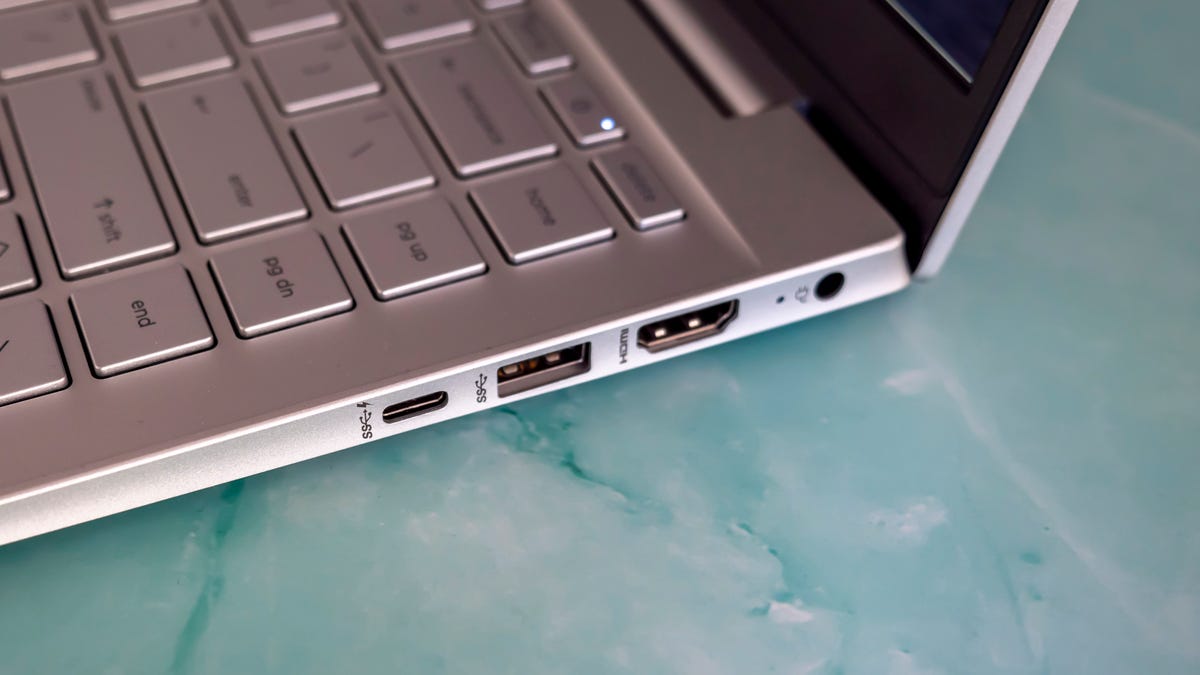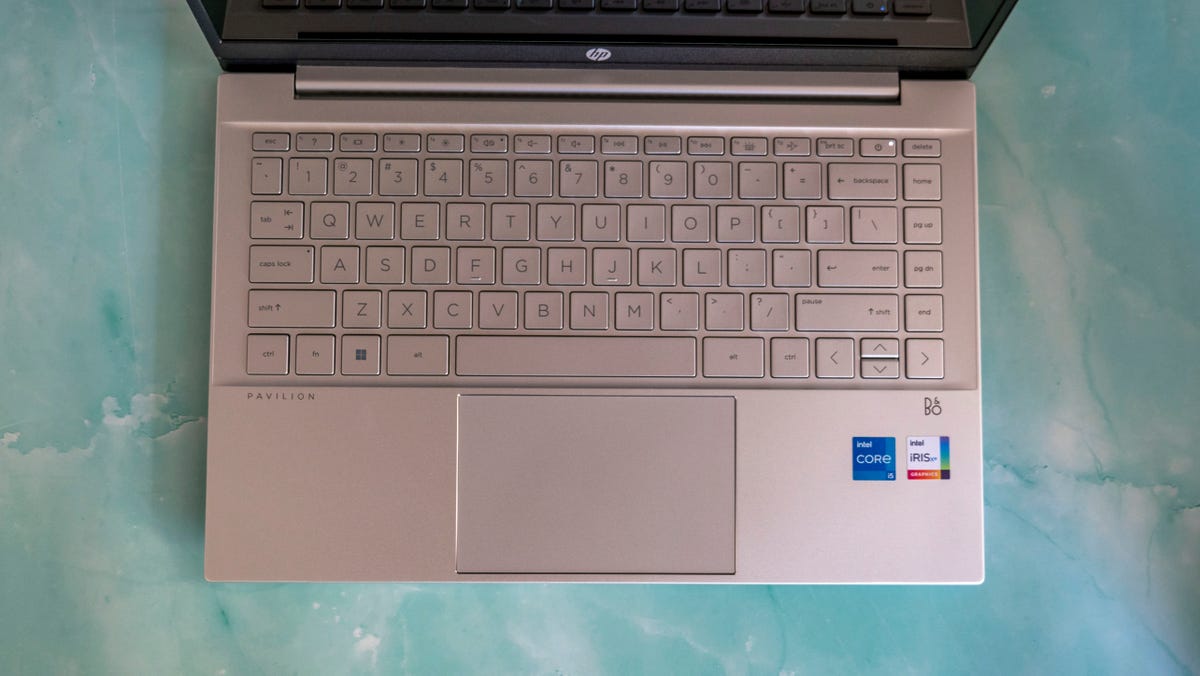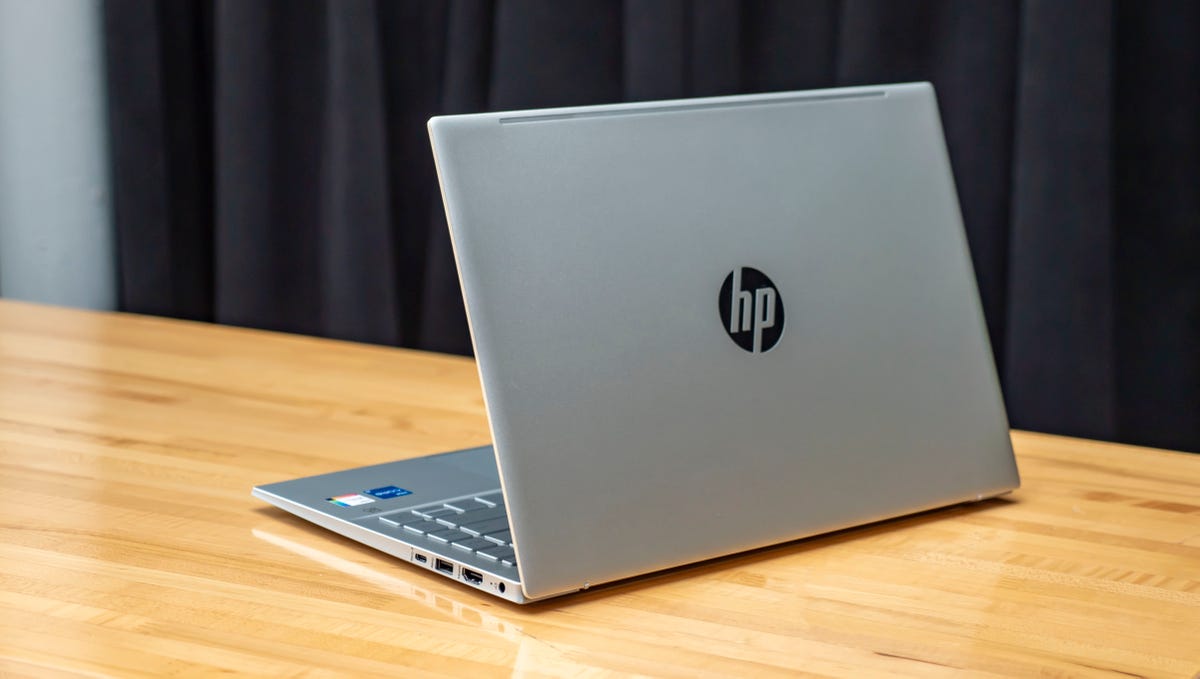The HP Pavilion 14 is a budget laptop that looks and performs above its price. At 3.2 pounds (1.4 kilograms), the laptop can easily be a daily carry for school or work. It could also be a good home office laptop that can be easily connected to a monitor, keyboard and mouse at a desk, but also has a screen that’s comfortably large enough for full-time use. It’s just a solid everyday laptop with a clean design.
The 14-inch laptop is available preconfigured or can be customized with prices starting at $650. HP offers a variety of options including AMD and Intel processors, discrete graphics and even a choice of four body colors. It gives you a lot of room to find a balance between your budget and performance needs. But even maxed out, the Pavilion 14 is $1,340. And that’s before any discounts to sweeten the deal. (Read on for more pricing details, including international prices.)
Like
- Many configuration options including discrete graphics
- Attractive, lightweight design with a good port assortment
Don’t Like
- Flex on the keyboard deck, lid
- Battery life might disappoint
The preconfigured model I tested is normally $800, which isn’t bad for a 14-inch 1080p laptop with a 12th-gen Intel Core i5 CPU, 16GB of memory and a 256GB SSD. But at the time of this review, this combination is only $550. The HP Pavilion 14 is also available in the UK and Australia with AMD processors with prices starting at £630 and AU$1,499 — those are marked down also, to £400 and AU$1,199.
It’s not unusual for certain models and configurations to cycle on and off sale. So if you can afford to wait for a discount, it’s definitely worth it because it can be significant. For Black Friday and Cyber Monday, HP even has discounts on the Intel and AMD customizable versions — a rarity — so you can choose the exact specs you want.
HP Pavilion 14 (2022)
|
Price as reviewed |
$800 |
|---|---|
|
Display size/resolution |
14-inch 1,920 x 1,080 display |
|
CPU |
1.3GHz Intel Core i5-1235U |
|
Memory |
16GB DDR4 3,200MHz RAM |
|
Graphics |
128MB Intel Rainbow Xe Graphics |
|
Storage |
256GB PCIe M.2 SSD |
|
Ports |
USB-C (10Gbps), USB-A (x2, 5Gbps), HDMI 2.1, combo audio jack |
|
Networking |
MediaTek Wi-Fi 6 MT7921 (2×2) and Bluetooth 5.2 combo |
|
Operating system |
Windows 11 Home |
The component choices include two AMD processors and three Intel chips up to a Core i7-1255U. With the Intel model, you can add an entry-level 2GB Nvidia GeForce MX550 graphics processor for low-res gaming and simple content creation. The Pavilion 14 can also be set up with 8GB, 12GB or 16GB of memory and up to a 1TB solid-state drive. What’s nice is neither the memory nor storage is soldered onto the motherboard, and it’s easy enough to get inside the laptop so you can potentially add more RAM or a larger, faster SSD later if you start with a less expensive build.

The laptop’s power adapter uses a barrel connector, but you can also use the USB-C port for charging.
Josh Goldman/CNET
HP also offers a choice of three displays. All of them are full HD (1,920×1,080 pixels). My review laptop had the base display, which, like the rest of the configuration, is fine for general use. It’s not particularly bright — it’s rated at 250 nits — and the glossy coating isn’t ideal if you regularly work near bright windows or lights. From this display, you can step up to a touchscreen. The top option has a rated brightness of 400 nits and a 100% sRGB color range, making it the best choice if you’ll be editing photos or videos or want better color in general.

The Pavilion 14 has a comfortable backlit keyboard.
Josh Goldman/CNET
One of the few things that can’t be upgraded is the webcam. It’s a 720p HD camera that was standard before everyone started spending more time on video calls and it really requires plenty of light for a decent picture. It would be nice if an upgrade to HP’s 5-megapixel webcam were available. HP does include its Enhanced Lighting app that turns part of your display into a ring light to help you look a little better on camera.
If the webcam is important to you, consider the Pavilion 14 Plus. It’s a little more expensive but adds the 5-megapixel webcam for sharper, more detailed videos, a second USB-C port and a microSD card slot, a fingerprint reader, higher-performance processors and graphics and an OLED display option.

The Pavilion 14 has a metal lid and the body is made from metal and plastics including recycled ocean-bound plastic.
Josh Goldman/CNET
Overall, HP puts together a solid budget-friendly laptop with the Pavilion 14. There are a couple of relatively minor shortcomings. Battery life isn’t great. It hit 6 hours, 51 minutes on our streaming video rundown test with the display at 50% brightness and volume through earbuds at 50%. Also, there is flex in the lid and keyboard deck. It is particularly noticeable in the center of the keyboard and when you press on the touchpad. It just makes this nice-looking laptop feel cheaper.
Otherwise, given its price, the HP Pavilion 14 is a highly likable laptop. If longer battery life is important and you don’t mind going smaller, strongly consider the Pavilion Aero 13. It’s also well priced and lasted for more than 10 hours in our tests, plus it only weighs 2 pounds. Outside of HP, consider the Lenovo IdeaPad Flex 5i. This two-in-one is slightly more expensive but outperformed the Pavilion 14, has longer battery life and has features like a Thunderbolt 4 USB-C port, an SD card reader, a 1080p webcam with a privacy shutter and a fingerprint reader.
The review process for laptops, desktops, tablets and other computer-like devices consists of two parts: performance testing under controlled conditions in the CNET Labs and extensive hands-on use by our expert reviewers. This includes evaluating a device’s aesthetics, ergonomics and features. A final review verdict is a combination of both objective and subjective judgments.
The list of benchmarking software we use changes over time as the devices we test evolve. The most important core tests we’re currently running on every compatible computer include: Primate Labs Geekbench 5, Cinebench R23, PCMark 10 and 3DMark Fire Strike Ultra.
A more detailed description of each benchmark and how we use it can be found in our How We Test Computers page.
Geekbench 5 (multicore)
Dell Inspiron 14 7420 2-in-1
Note:
Longer bars indicate better performance
Cinebench R23 CPU (multicore)
Dell Inspiron 14 7420 2-in-1
Note:
Longer bars indicate better performance
PCMark 10 Pro Edition
Dell Inspiron 14 7420 2-in-1
Note:
Longer bars indicate better performance
3DMark Wild Life Extreme Unlimited
Dell Inspiron 14 7420 2-in-1
Note:
Longer bars indicate better performance
Streaming video playback battery drain test (minutes)
Dell Inspiron 14 7420 2-in-1
Note:
Longer bars indicate better performance
System Configurations
|
HP Pavilion 14 |
Windows 11 Home; 1.3GHz Intel Core i5-1235U; 16GB DDR4 3,200MHz RAM; 128MB Intel Rainbow Xe Graphics; 256GB SSD |
|---|---|
|
HP Laptop 17 |
Windows 11 Home; 2.3GHz AMD Ryzen 5625U; 8GB DDR4 3,200MHz RAM; 512GB Integrated AMD Radeon Graphics; 256GB SSD |
|
Lenovo IdeaPad Flex 5i |
Windows 11 Home; 1.3GHz Intel Core i5-1235U; 16GB DDR4 4,266MHz RAM; 128MB Intel Rainbow Xe Graphics; 512GB SSD |
|
Dell Inspiron 14 7420 2-in-1 |
Windows 11 Home; 1.7GHz Intel Core i7-1255U; 16GB DDR4 3,200MHz; 128MB Intel Rainbow Xe Graphics; 512GB SSD |
|
Acer Aspire 5 A515-57 |
Windows 11 Home; 1.3GHz Intel Core i5-1235U; 16GB DDR4 3,200MHz RAM; 128MB Intel Rainbow Xe Graphics; 512GB SSD |